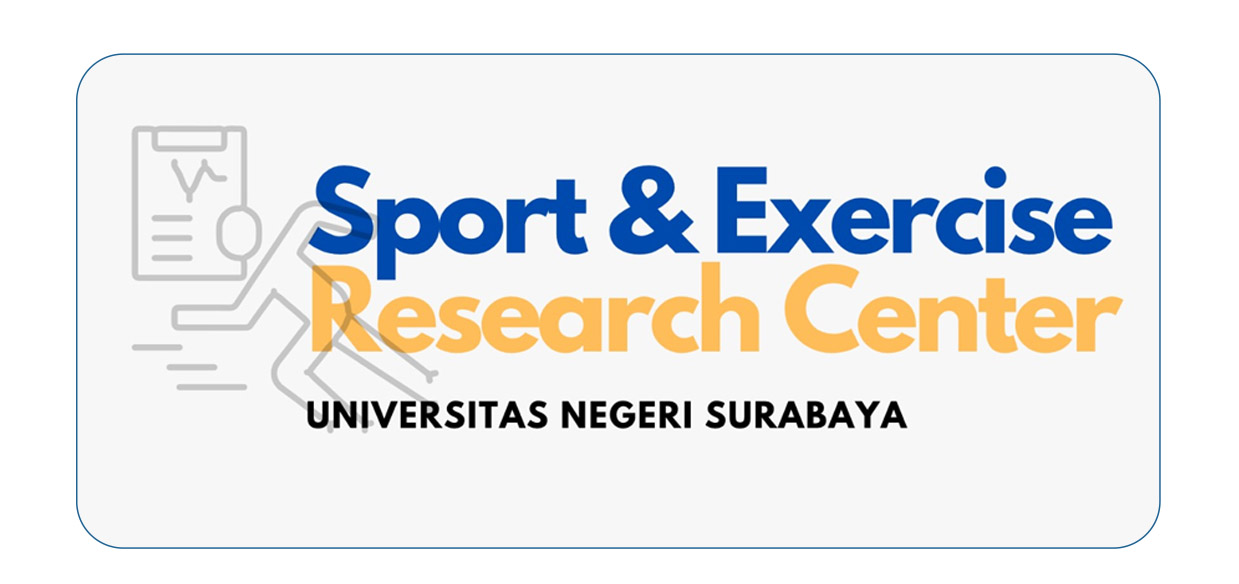The Effect Of Implementing The Interval Method Using Weighted Vest On Power Endurance Abbilities Pusaka Angels Players
DOI:
https://doi.org/10.26740/jossae.v6n1.p9-18Keywords:
interval training, physical training., power endurance, training method, weighted vestAbstract
Power endurance capability is needed by players to maintain explosivity in a tired state. Both explosivity in running and technical explosivity in the game. To increase the power endurance ability, at the interval of the match after the first week the Pusaka Angel coach team provides training using the interval method accompanied by the use of a weighted vest. The use of the interval method because this method is one of the training methods that can increase the ability of power endurance. The research method is to process the
variable data identified from the test results and measurements of the power endurance ability of the women's futsal athletes from the Pusaka Angel team. relationship and the level of relationship made to events that have taken place or have occurred. This was done untreated for 8 weeks. The target population in this study were all female futsal athletes from the Pusaka Angel team. Meanwhile, the affordable population is determined by athletes prepared to participate in the 2019/2020 Indonesian Professional Futsal League, totaling 17 female athletes. Based on data processing and statistical analysis in this study, it can be concluded that there is a significant effect of the application of the interval method using a weighted vest on increasing the power endurance ability of the heirloom futsal players.
References
Bachero-Mena, B., & Gonzalez-Badillo, J. J. (2014). Effects of Resisted Sprint Training On Acceleration With Three Different Loads Accounting For 5, 12.5, And 20% Of Body Mass. Journal of Strenght and conditioning Research, 28(10), 29542960.
https://doi.org/10.1519/jsc.0000000000000492
Berdejo-del-Freno, D., & Laupheimer, M. W. (2014). Recovery & Regeneration Behaviours in Elite English Futsal Players. 2(3), 7782. https://doi.org/10.12691/ajssm-2-3-2
Bolger, R., Lyons, M., Harrison, A. J., & Kenny, I. C. (2016). Coaching sprinting¯: Expert coaches perception of resistance-based training. International Journal of Sports Science & Coaching, 0(0), 19.
https://doi.org/10.1177/1747954116667113
Buchheit, M., & Laursen, P. B. (2013). High-Intensity Interval Training, Solutions to the Programming Puzzle. Sports Medicine, 43(10), 927954. https://doi.org/10.1007/s40279-013-0066-5
Causer, J., & Ford, P. R. (2014). ˜œ Decisions , decisions , decisions : transfer and specificity of decision-making skill between sports. Springer. https://doi.org/10.1007/s10339-014-0598-0
Cicioni-kolsky, D., Lorenzen, C., Williams, M. D., & Kemp, J. G. (2013). Endurance and sprint benefits of high-intensity an supramaximal interval training. European Journal of Sport Science, 13(3), 304311. https://doi.org/10.1080/17461391.2011.606844
Clark, K. P., Stearne, D. J., Walts, C. T., & Miller, A. N. D. (2010). The Longitudinal Effects Of Resisted Sprint Training Using Weighted Sleds Vs.Weighted Vests. Journal of Strenght and Conditioning Research, 24(12), 32873295. https://doi.org/10.1519/jsc.0b013e3181b62c0a
Cottle, C. A., Carlson, L. A., & Lawrence, M. A. (2014). Effects of Sled Towing on Sprint Starts. Journal of Strenght and Conditioning Research,
28(5), 12411245. https://doi.org/10.1519/jsc.0000000000000396
DJ, R., JA, R., M, C.-P., & PE, A. (2016). Physical performance of elite and subelite Spanish female futsal players. Biology of Sport, 33(3), 297304. https://doi.org/10.5604/20831862.1212633
Dogramaci, S. N., Watsford, M. L., & Murphy, A. J. (2011). Time-Motion Analysis of International and National Level Futsal. Journal of Strenght and Conditioning Research, 25(3), 646651. https://doi.org/10.1519/jsc.0b013e3181c6a02e
Fraenkel, jack R., Wallen, N. E., & Hyun, H. H. (2012). How to Design and Evaluate Research in Education (8th ed.). McGraw-Hill Higher Education.
GarcÃa-pinillos, F., Soto-hermoso, V. M., & Latorre-román, P. A. (2017). How does high-intensity intermittent training affect recreational endurance runners¯? Acute and chronic adaptations¯: A systematic review. Journal of Sport and Health Science, 6(1), 5467.
https://doi.org/10.1016/j.jshs.2016.08.010
Gledhill, A., Harwood, C., & Forsdyke, D. (2017). Psychosocial factors associated with talent development in football¯: A systematic review. Psychology of Sport and Exercise, 31, 93112. https://doi.org/10.1016/j.psychsport.2017.04.002
Gratton, C. (2014). Research Method for Sports Studies.
https://doi.org/https://doi.org/10.4324/9781315796222
Ismail, S. I., Adnan, R., & Sulaiman, N. (2014). Moderate Effort Instep Kick in Futsal. Procedia Engineering, 72, 186191. https://doi.org/10.1016/j.proeng.2014.06.031
John, J., & Sidik, D. Z. (2017). Pengaruh Metode Repetisi dalam Latihan Plyometrics Single-Leg Speed Hop terhadap Peningkatan Power Endurance Tungkai pada Cabang Olahraga Futsal. Jurnal Kepelatihan Olahraga, 10(2), 111.
Lhaksana, J. (2011). Taktik dan Strategi Futsal Modern. Be Champion.
Macadam, P., Simperingham, K. D., & Cronin, john B. (2016). Acute Kinematic and Kinetic Adaptations to Wearable Resistance During Sprint Acceleration. Journal of Strenght and Conditioning Research, 31(5), 12971304. https://doi.org/10.1519/JSC.0000000000001596
MacInnis, M. J., & Gibala, M. J. (2017). Physiological adaptations to interval training and the role of exercise intensity. Journal of Physiology, 595(9), 29152930. https://doi.org/10.1113/JP273196
Mănescu, C. O. (2018). The Principles of Physical Training In Futsal. The Bucharest Universitu of Economic Studies, X(2), 104109.
Milanez, V. F., Pedro, R. E., Moreira, A., Boullosa, D. A., Salle-neto, F., & Nakamura, F. Y. (2011). The Role of Aerobic Fitness on Session Rating of Perceived Exertion in Futsal Players. International Journal of Sports Physiology and Performance, 6, 358366.
https://doi.org/10.1123/ijspp.6.3.358.
Mills, A., Butt, J., Maynard, I., & Harwood, C. (2012). Identifying factors perceived to influence the development of elite youth football academy players football academy players. Journal of Sports Sciences, 30(15), 15931604. https://doi.org/10.1080/02640414.2012.710753
Mohammed, A., Shafizadeh, M., & Platt, G. K. (2014). Effects of the level of expertise on the physical and technical demands in futsal. International Journal of Performance Analysis in Sport, 14, 473481.
https://doi.org/10.1080/24748668.2014.11868736
Mulyawan, R., Sidik, D. Z., & Hidayah, N. (2016). Dampak Penerapan Pola Pelatihan Harness Menggunakan Metode Interval dan Repetisi Terhadap Peningkatan Kemampuan Power Endurance Tungkai. Jurnal Sains Keolahragaan Dan Kesehatan, 1(1), 17.
https://doi.org/http://dx.doi.org/10.5614%2Fjskk.2016.1.1.1
Naser, N., & Ali, A. (2016). A descriptive-comparative study of performance characteristics in futsal players of different levels.
Journal of Sports Sciences.
https://doi.org/10.1080/02640414.2015.1134806
Naser, N., Ali, A., & Macadam, P. (2017). Journal of Exercise Science & Fitness Physical and physiological demands of futsal. Journal of Exercise Science & Fitness, 15(2), 7680. https://doi.org/10.1016/j.jesf.2017.09.001
Ramacı, S. N. D. O. Ğ., Watsford, M. L., & Murphy, A. J. (2015). Activity Profile Differences Between Subelite Futsal Teams. 8(2).
https://doi.org/dx.doi.org/10.4025/jphyseduc.v29i1.296
RodrÃgue-Lorenzo, L.,Fernandez-del-Olmo,M.,Sanchez-Molina,J.A.,
& MartÃn-Acero, R.(2016).
Role of Vertical Jumps and Anthropometric Variables in Maximal Kicking
Ball Velocities in Elite Soccer Players. Journal of Human Kinetics, 53,
143153.
https://doi.org/10.1515/hukin-2016-00118
Rodrigues, V. M., Ramos, G. P., Mendes, T. T., Cabido, C. E. T., Melo, E.S.,
Condessa, L. A., Coelho, D.
B., & Garcia, E. S. (2011). Intensity of Official Futsal Matches. Journal of Strenght and Conditioning Association, 25(9), 24822487. https://doi.org/10.1519/jsc.0b013e3181fb4574
Sappaile, B. I. (2010). Konsep Penelitian Ex-Post Facto. Jurnal Pendidikan Matematika, 1(2), 105113.
Seiler, S., & Sjursen, J. E. (2004). Effect of work duration on physiological and rating scale of perceived exertion responses during self-paced interval training. Scandinavian Journal of Medicine & Science in Sports, 14, 318325. https://doi.org/10.1046/j.1600-0838.2003.00353.x
Sidik, D. Z. (2010). Pembinaan Kondisi Fisik (Dasar dan Lanjutan). FPOK UPI.
Sidik, D. Z., Pesurnay, P., & Afari, L. (2019). Pelatihan Kondisi Fisik. PT. Remaja Rosdakarya.
Sugiyono. (2010). Metode Penelitian Pendidikan Pendekatan Kuantitatif, kualitatif, dan R&D. Alfabeta.
Sugiyono. (2011). Metode Penelitian Kuantitatif, Kualitatif dan R&D. Alfabeta.
Vic, H., & Engler, L. (2011). Futsal¯: Technique, Tactics and Training. Meyer And Meyer Sport.
Vicente-vila, P. (2016). The Goalkeeper Influence on Ball Possession Effectiveness in Futsal. 51(June), 217224. https://doi.org/10.1515/hukin-2015-0185.
Yiannaki, C., Carling, C., & Collins, D. (2018). Futsal as a potential talent development modality for soccera quantitative assessment of high-level soccer coach and player perceptions. Science and Medicine in Football, 2(4), 299308. https://doi.org/10.1080/24733938.2018.1483079.
Downloads
Published
How to Cite
Issue
Section
 Abstract views: 688
,
Abstract views: 688
, PDF Downloads: 565
PDF Downloads: 565








